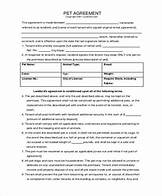What is a Pet Deposit For?
If you're a pet owner, you're likely familiar with the concept of a pet deposit. But what exactly is it, and why do landlords charge it? In this article, we'll explore the purpose of pet deposits and provide guidance on navigating them as a pet owner.

What is a Pet Deposit?
A pet deposit is a refundable fee charged by landlords to tenants who have pets. It is typically a one-time charge due at the start of the tenancy.
Why Do Landlords Charge Pet Deposits?
There are several reasons why landlords may choose to charge pet deposits:
1. Potential Damage: Pets can cause damage to a property, such as scratching floors, chewing on furniture, or staining carpets. A pet deposit helps landlords cover the cost of any repairs or cleaning required due to pet-related damage.
2. Increased Wear and Tear: Pets can also lead to increased wear and tear on a property, even if they don't cause direct damage. For example, pet hair can accumulate and require more frequent cleaning. A pet deposit helps landlords offset the additional maintenance costs associated with pet ownership.
3. Liability Concerns: Landlords may be concerned about liability if a pet causes injury or property damage to other tenants or visitors. A pet deposit can help landlords cover legal expenses or damages awarded in such cases.
Navigating Pet Deposits as a Pet Owner
If you're a pet owner looking to rent a property, here are some tips for navigating pet deposits:
1. Be Prepared: When searching for rentals, be prepared to disclose that you have a pet and inquire about pet deposits. Ask about the deposit amount, any additional fees, and the landlord's pet policy.
2. Provide Pet Information: Be honest about your pet's size, breed, and temperament. Providing accurate information can help landlords assess the potential risk and may influence their decision on whether to accept your pet.
3. Be Willing to Pay a Deposit: While pet deposits can be an additional expense, they are often a necessary part of renting with a pet. Be prepared to pay the deposit if you want to live in a pet-friendly property.
4. Take Good Care of the Property: The best way to avoid losing your pet deposit is to take good care of the property. Keep your pet well-behaved and clean up after them regularly. Address any damage caused by your pet promptly to minimize the cost of repairs.
5. Document Your Pet's Behavior: Consider keeping a record of your pet's training, vaccinations, and any positive interactions they have with other people or animals. This documentation can help you demonstrate that your pet is well-behaved and responsible.
Conclusion
Pet deposits are a common practice in the rental market. They serve as a safety net for landlords and help offset the potential costs associated with pet ownership. As a pet owner, it's important to understand the purpose of pet deposits, be prepared to pay them, and take good care of the property to avoid losing your deposit.
Declaration: All article resources on this website, unless otherwise specified or labeled, are collected from online resources. If the content on this website infringes on the legitimate rights and interests of the original author, you can contact this website to delete it.

